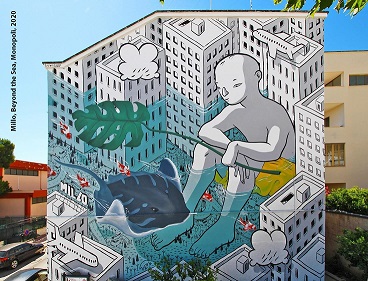La diversità linguistica nell’era digitale: le sfide della lingua serba
DOI:
https://doi.org/10.54103/2035-7680/18775Keywords:
Serbian language; didactics; dictionaries; digital; DDLAbstract
The paper is dedicated to the analysis of digital tools used in the teaching and lexicography of Serbian as foreign language. Considering the particular characteristics of this language, especially in relation to its rich morphology, the essential tools in the early stages of study include morphological dictionaries, while at the intermediate and advanced levels digital dictionaries and linguistic corpora are necessary. Unlike English, which in terms of digital technologies is being updated and developed almost continuously, languages with fewer resources, such as Serbian, mainly make use of traditional tools, and only in recent years has the tendency to orient themselves towards digital. The global pandemic, which exploded in early 2020, has accelerated this process by urging teachers to search for innovative paths that lend themselves to virtual teaching. The questions listed here and for which we will try to find an answer concern: digital tools for the Serbian as foreign language, their advantages over traditional teaching material, the possible ways to follow in experimenting with the Data-driven learning methodology.
Metrics
References
Banjanin, Ljiljana. “Un contributo alla storia della serbo-croatistica italiana.” Nasleđe, vol. XI, no. 29, 2014, pp. 67-81.
Bernardini, Silvia. “Corpora in the Classroom: An Overview and some Reflections on Future Developments.” How to Use Corpora in Language Teaching, a cura di John Sinclair, John Benjamins, 2004, pp. 15-36.
Church, Kenneth Ward e Patrick Hanks. “Word Association Norms, Mutual Information, and Lexicography.” Computational Linguistics, vol. 16, no.1, 1990, pp. 22-29.
Glosbe dizionario. https://it.glosbe.com/. Consultato il 3 Ago. 2021.
Hrvatski jezični portal. https://hjp.znanje.hr/index.php?show=search. Consultato il 07 Ago. 2021.
Johns, Tim. “From Printout to Handout: Grammar and Vocabulary Teaching in the Context of Data-driven Learning.” CALL Austria, 10, 1990, pp. 14-24.
---. “Contexts: the background, development and trialling of a concordance-based CALL program.” Teaching and Language Corpora, a cura di Anne Wichmann e Steven Fligelstone, Longman, 1997, pp. 100-115.
Karadžić, Vuk Stefanović. Srpski rječnik: digitalno izdanje. http://raskovnik.org/recnici/VSK.SR. Consultato il 02 Ago. 2021.
Kemp, Simon. Digital 2021 Italy, Overview Report. https://datareportal.com/reports/digital-2021-italy. Consultato il 9 Ago. 2021.
Kosem, Iztok,, et al. “The image of the monolingual dictionary across Europe. Results of the European survey of dictionary use and culture.” International Journal of Lexicography, vol. 32/1, 2019, pp. 92-114.
Kosović, Mirjana. Srpsko-italijanski rečnik. Prosveta, 2002.
Krstev, Cvetana, e Duško Vitas. “Corpus and Lexicon-Mutual Incompletness.” Proceedings of the Corpus Linguistics Conference, 14-17 July 2005, a cura di Pernilla Danielsson e Martijn Wagenmakers, Birmingham, 2005. https://www.birmingham.ac.uk/Documents/college-artslaw/corpus/conference-archives/2005-journal/TheLexicon/KrstevVitas.doc. Consultato il 09 Ago. 2021.
Magni, Francesco. “Ciò che è vivo e ciò che è morto dell’università. Prime riflessioni pedagogiche nel mezzo della pandemia globale.” Formazione lavoro persona, vol. 33, 2021, pp. 10-26. https://forperlav.unibg.it/index.php/fpl/article/view/537. Consultato il 10 Ago. 2021.
Marello, Carla. “Using Mobile Learning Dictionary in an EFL Class.” Proceedings of the XVI EURALEX CONGRESS: The User in Focus, a cura di Andrea Abel, Chiara Vettori e Natascia Ralli, Eurac Research Press, 2014, pp. 63-83.
META-NET. White Paper Series: Key Results and Cross-Language Comparison. https://bit.ly/373irwJ. Consultato il 11 Ago. 2021.
Miličević, Maja. “Korpus srpskog kao stranog jezika (KSKS): opis građe i plan izrade.” Srpski kao strani jezik u teoriji i praksi III, a cura di Vesna Krajišnik, Filološki fakultet, Centar za srpski kao strani jezik, 2016, pp. 279-289.
Morfološki rečnik srpskog jezika. http://www.lexicom.rs/lexicon/search.aspx. Consultato il 29 Ago.2021.
O’Keeffe, Anne. “Data-driven learning – a call for a broader research gaze.” Language Teaching, 2020, pp. 1-14.
Perillo, Francesco Saverio. “La serbocroatistica italiana: bilancio di un cinquantennio.” La slavistica in Italia. Cinquant’anni di studi (1940-1990), a cura di Giovanna Brogi Bercoff et al., Ministero per i Beni culturali e ambientali, Direzione Generale per gli Affari Generali Amministrativi e del personale, Divisione Editoria, 1994, pp. 401-428.
Perišić Arsić, Olja. “Upotreba korpusa u didaktici srpskog jezika kao stranog.” Srpski kao strani jezik u teoriji i praksi IV, a cura di Vesna Krajišnik, Filološki fakultet, Centar za srpski kao strani jezik, Beograd, 2020, pp. 103-115.
---. “Collocazioni nella didattica del serbo come lingua straniera.” Filolog, XI/22, 2020, pp. 88-115.
---. “Corpora in the Classroom – the Case of the Serbian Language for Italian Speakers.” New Trends in Slavic Studies, a cura di Suarez Cuadros, Simon Jose et al., URSS, Mosca, 2021, pp. 126-137.
Raskovnik: srpski leksikografski portal. http://raskovnik.org/. Consultato il 29 Ago. 2021.
Rečnik srpskohrvatskoga književnog jezika, vol. I, no. VI, Matica srpska, 1967-1978.
Rečnik srpskohrvatskog književnog i narodnog jezika, Srpska akademija nauka i umetnosti – Institut za srpski jezik, 1959-2019.
Rundell, Michael. “Dictionaries and crowdsourcing, wikis and user-generated content.” International Handbook of Modern Lexis and Lexicography, a cura di Patrick Hanks e Gilles-Maurice de Schryver, Springer, 2017. https://doi.org/10.1007/978-3-642-45369-4_26-1. Consultato il 09 Ago. 2021.
Sketch Engine. http://www.sketchengine.co.uk. Consultato il 29 Ago. 2021.
Utvić, Miloš. Izgradnja referentnog korpusa savremenog srpskog jezika. Tesi di dottorato, 2013. https://fedorabg.bg.ac.rs/fedora/get/o:10061/bdef:Content/get. Consultato il 09 Ago. 2021.
Srpska digitalna biblioteka. http://www.srpskijezik.com. Consultato il 29 Ago. 2021.
Tecci, Bruno. Think forward 2021: The social reset. https://wearesocial.com/it/blog/2020/11/think-forward-2021-the-social-reset/. Consultato il 10 Ago. 2021.
Vitas, Duško, et al. “Српски језик у дигиталном добу - The Serbian Language in the Digital Age.” Meta-Net, White Paper Series, a cura di Georg Rehm e Hans Uszkoreit, Springer, 2012. http://www.meta-net.eu/whitepapers/volumes/serbian. Consultato il 01 Ago. 2021.
Vitas Duško e Miloš Utvić. Korpus savremenog srpskog jezika na Matematičkom fakultetu Univerziteta u Beogradu. http://www.korpus.matf.bg.ac.rs. Consultato il 22 Lugl. 2022.
Vitaz, Milica, e Milica Poletanović. “Data-Driven Learning. The Serbian case.” EL.LE, vol. 8/2, 2019, pp. 409-422.
Wikipedia. https://bit.ly/3iTZIcG. Consultato il 29 Ago. 2021.
Wiktionary. https://bit.ly/3GYp8AO. Consultato il 29 Ago. 2021.
Downloads
Published
How to Cite
Issue
Section
License

This work is licensed under a Creative Commons Attribution-NonCommercial-NoDerivatives 3.0 Unported License.




